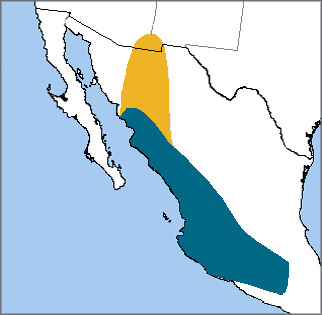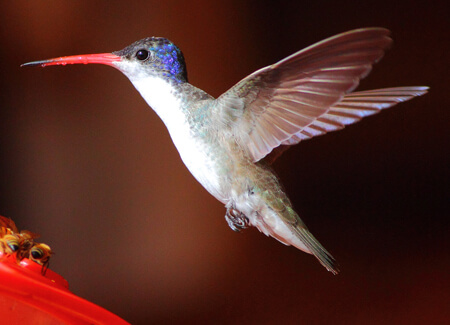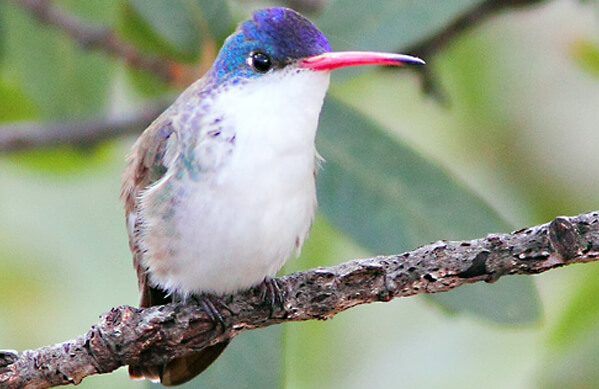 This distinctive hummingbird can be identified by its iridescent bluish-violet crown, red bill, and shining white underparts. It is the only American hummingbird species in which the males lack a brightly colored gorget (throat patch).
This distinctive hummingbird can be identified by its iridescent bluish-violet crown, red bill, and shining white underparts. It is the only American hummingbird species in which the males lack a brightly colored gorget (throat patch).
In the southwestern U.S., where this bird breeds, the Violet-crowned Hummingbird depends on high-quality riparian habitat—areas that are at risk from tree loss and erosion. These increasingly rare places harbor other threatened birds such as the Southwestern Willow Flycatcher, Western Yellow-billed Cuckoo, and Elf Owl.
In this hummingbird's breeding areas, overgrazing, drought, fire, and invasive trees such as saltcedar (which crowd out the native plant species) all create challenges.
Sycamore Species
Although the Violet-crowned Hummingbird is fairly common in Mexico, it is uncommon and local in the United States and was not found breeding there until 1959. Since then, the species has regularly been found to breed in southeastern Arizona and southwestern New Mexico. It has been found overwintering in the U.S. in greater numbers in recent years, possibly an indication of an expansion of its range.
Sign up for ABC's eNews to learn how you can help protect birds
The Violet-crowned Hummingbird population in the U.S. favors stands of Arizona sycamore trees for nesting. Like other hummingbirds, including the Costa's and Rufous, this species is generally solitary; there is no pair bond between males and females. After mating, the female chooses a nest location, builds a nest, and raises her chicks alone.

Violet-crowned Hummingbird, Greg Homel, Natural Elements Productions
A Place for Hummingbirds
In 2014, ABC and partners helped purchase Paton's Birder Haven in Patagonia, southeast Arizona, where Violet-crowned Hummingbirds and other “specialty” species of the southwest border, such as Plain-capped Starthroat and Magnificent Hummingbird, can be spotted by visitors. Now called the Paton Center for Hummingbirds, the sanctuary has been turned over to the Tucson Audubon Society for long-term management.
Support the Hummingbird Effect!
In his recent book, Steven Johnson coins the term “Hummingbird Effect” to make the point that innovation in one realm can trigger unpredictable and unexpected advancement in others. We not only agree, but have dozens of examples of how great American bird conservation projects make considerable, sometimes unexpected contributions to other important causes including amphibian conservation, human health, food safety, climate change, water conservation, and home energy savings. Support the Hummingbird Effect today.
Donate to support ABC's conservation mission!



















































